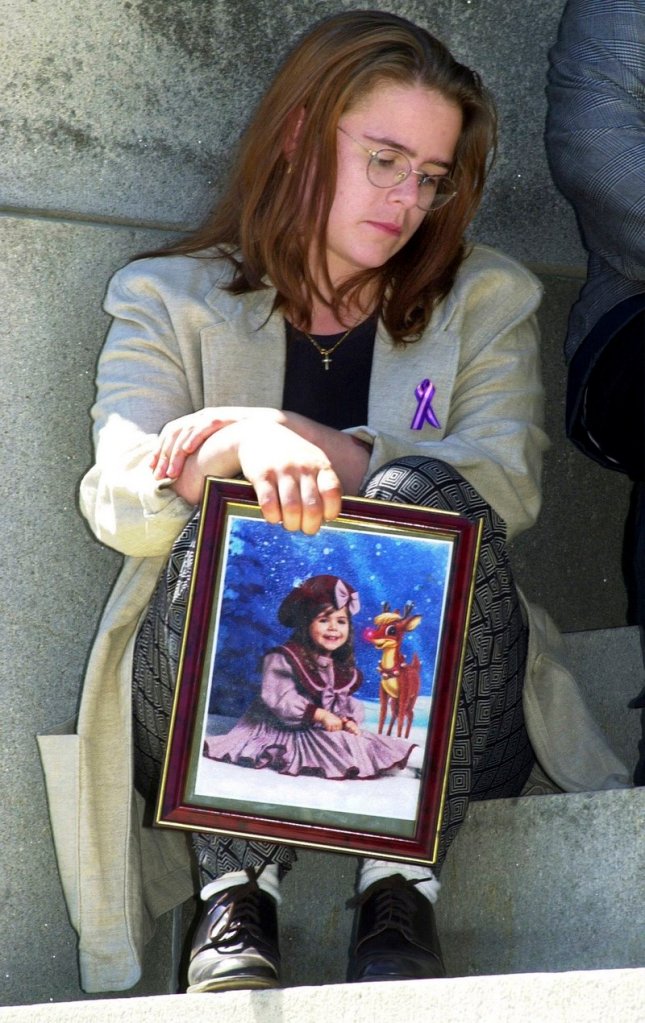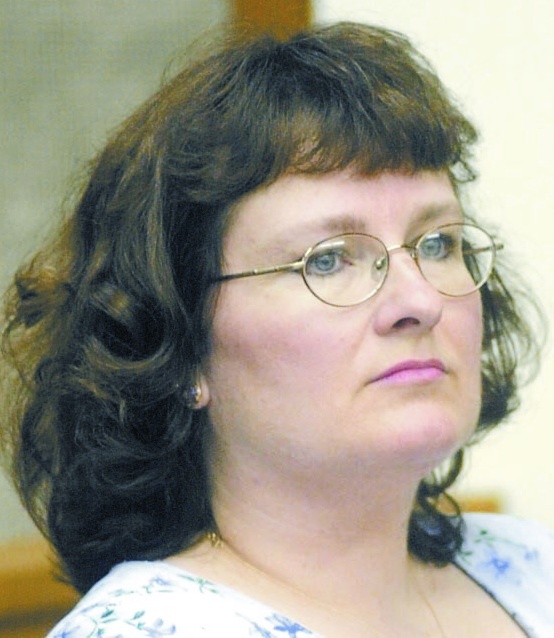A young girl in need of a stable home. A forceful foster parent. A lack of oversight.
It was a recipe for disaster.
Bound in duct tape in a tipped-over high chair, 5-year-old Logan Marr died 10 years ago Monday in an unfinished Chelsea basement.
The girl was in the state’s protective care system at the time, and her death sent shock waves — and spurred reform — throughout the state Department of Health and Human Services.
In retrospect, the case heightened awareness of shortcomings in the state’s foster care system. Observers say Maine’s child welfare system is now a national model.
At the time, however, it rattled the most hardened law personnel and shook confidence in how Maine protects its most vulnerable children.
“This was different,” said Deputy Attorney General William Stokes, a prosecutor in the case. “This was a child who was 5. She was verbal, she was mobile.
“The idea basically was she was put in a dungeon, tied to a chair, bound and gagged. She was left to her own devices. It was very horrifying to people.”
Sally Ann Schofield — the state child caseworker who took in Logan and her younger sister, Bailey — was convicted of manslaughter in Logan’s 2001’s death and remains behind bars at the Maine Correctional Center in Windham.
She had been acquitted of depraved-indifference murder. Her manslaughter sentence, appealed several times, ended up at 20 years in prison with three years suspended, then four years of probation. Schofield, now 49, has six or seven years remaining in her prison term.
Stokes said the case brought renewed attention to child deaths.
“Typically we think of them as shaken babies,” the prosecutor said. “With a shaken baby, we’re talking about seconds, a violent eruption by a parent or caregiver to shut a baby up. This was much more deliberate, much more elaborate.
“Think of how much time it took to wrap this child up in duct tape.”
To illustrate the crime at trial, Stokes wrapped 42 feet of duct tape around a high chair — the same length investigators said Schofield used to bind the child.
“A stereotype of who is capable of doing this type of crime was shattered,” Stokes said. “She was a professional, a supervisor in DHHS, who fashioned herself knowledgeable about children, relationships, how to raise a child. Here was someone you never would have predicted.”
Stokes said because Schofield had been a supervisor in the system, it proved difficult for other case workers to supervise her.
“There was a young case worker, and Sally was a very forceful personality,” Stokes said. “It was a recipe for disaster.”
State officials took Logan from her birth mother in 1998 and then returned her after Logan’s sister, Bailey, was born.
In March 2000, the two girls were removed from their mother’s home because their mother — Christy M. Baker, also known as Christy Marr and, later, Christy Reposa — “was returning to her previous unsafe lifestyle,” according to a state petition for a child-protection order.
After several months in foster homes, the sisters were placed in Schofield’s care.
Schofield was a DHHS worker when she took Logan in as a foster child.
The state later acknowledged that Logan’s caseworker did not check on the child as often as state rules required. E-mails between the caseworker and Schofield showed a friendly relationship, not the arms-length relationship that should exist.
The department was also criticized for failing to promptly investigate allegations just weeks before her death that Logan was being abused.
Logan’s father, John W. Wagg III, of Bowdoin, was 24 when his only daughter was born. He declined comment for this story. Several months after Logan’s death, an attorney representing Wagg said the father had been seeking reunification with his daughter. However, the state wanted the sisters to stay together. Wagg was not Bailey’s father.
After Logan’s death, Reposa regained custody of Bailey.
Schofield’s young son, Shaynen, was ordered to have no contact with his mother and was last known to be living with his paternal grandparents — David and Marilyn Schofield — in Knox. The couple, who put up their property as bail before Sally Schofield’s conviction, insist she is innocent. In a 2004 interview, they said they believe Logan’s death was a tragic accident brought on when the child played with duct tape.
“I still believe Sally. I do not believe she did this intentionally to a child,” Marilyn Schofield said. “I knew Sally during the six years she and (Sally Schofield’s husband) Dean were together, and she had a way around kids. She never lost her cool.”
Brenda Harvey, former commissioner of the Department of Health and Human Services, said in an interview last month that the child welfare system is dramatically different today than a decade ago.
The department now focuses much more on “kinship care” or keeping children with relatives rather than foster care, she said.
Case workers now visit foster children at least once a month, rather than the three-month standard back then. Adoptions also happen much more quickly. And, most significantly, “The number of children in our care has significantly decreased,” she said.
In January 2001, some 2,956 children were in legal custody of the Department of Health and Human Services; this January, that number is 1,461, according to department spokesman John Martins.
Parents are no longer seen and treated as adversaries, Harvey said. “Now we have a practice where family team meetings are held and staff see parents as equal partners. … It’s not just blame the parents.”
Since 2001, the number of children taken from their homes has dropped by 30 percent, said Richard Wexler, executive director of the National Coalition for Child Protection Reform in Alexandria, Va.
At the same time, the proportion of foster children placed in group homes and other institutions has dropped from about 28 percent to 10 percent, making Maine one of the nation’s best at avoiding placing foster children in group home settings, Wexler said.
Maine’s child welfare system has been held up as a national model by the Annie E. Casey Foundation, a private group in Baltimore that works on child welfare issues.
Logan’s death was the driving force behind the improvements, said Jim Beougher, director of the Office of Child and Family Services at the Maine Department of Health and Human Services.
“I don’t think anybody who was (involved in child welfare) at the time will ever forget not only the tragedy, but the ensuing public debate,” said Lucky Hollander, director of Cumberland County Child Abuse and Neglect Council in 2001 who later worked for DHHS. “(Logan’s death) certainly was a catalyst for change. … What we learned was there definitely needed to be a different way of assessing safety on a lot of levels.”
The Logan Marr case also made headlines as attitudes toward child protective care were changing nationally, Hollander said.
“Logan Marr may have triggered the public attention, but certainly we were getting better and better in evaluating outcomes of children both in care and at home,” Hollander said.
Tracy Feild, of the Annie E. Casey Foundation, said child welfare managers, case workers and advocates, as well as some legislators, from Virginia and other states have visited Maine in recent years to get a firsthand look at its child welfare system.
“Maine was not on the map as being a leader in the past,” Feild said. “Now they’re viewed as having really good outcomes.”
Jed Davis, Schofield’s attorney at trial, said she declined a request to be interviewed for this story. Davis also declined.
Reposa, who was 18 when Logan was born, did not respond to an interview request sent via the Office of the Maine Attorney General.
Associated Press Writer Clarke Canfield contributed to this report.
Send questions/comments to the editors.





Success. Please wait for the page to reload. If the page does not reload within 5 seconds, please refresh the page.
Enter your email and password to access comments.
Hi, to comment on stories you must . This profile is in addition to your subscription and website login.
Already have a commenting profile? .
Invalid username/password.
Please check your email to confirm and complete your registration.
Only subscribers are eligible to post comments. Please subscribe or login first for digital access. Here’s why.
Use the form below to reset your password. When you've submitted your account email, we will send an email with a reset code.